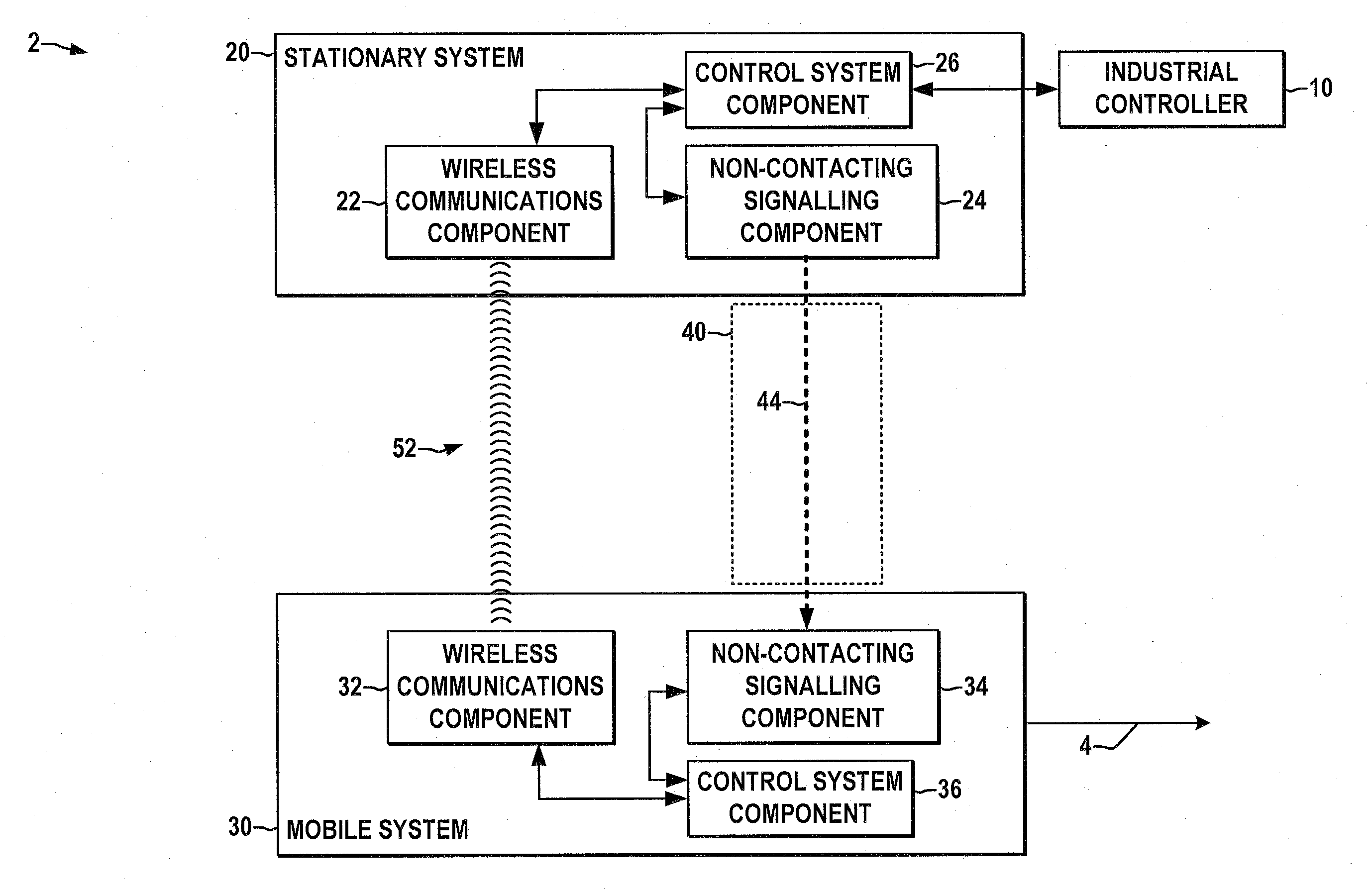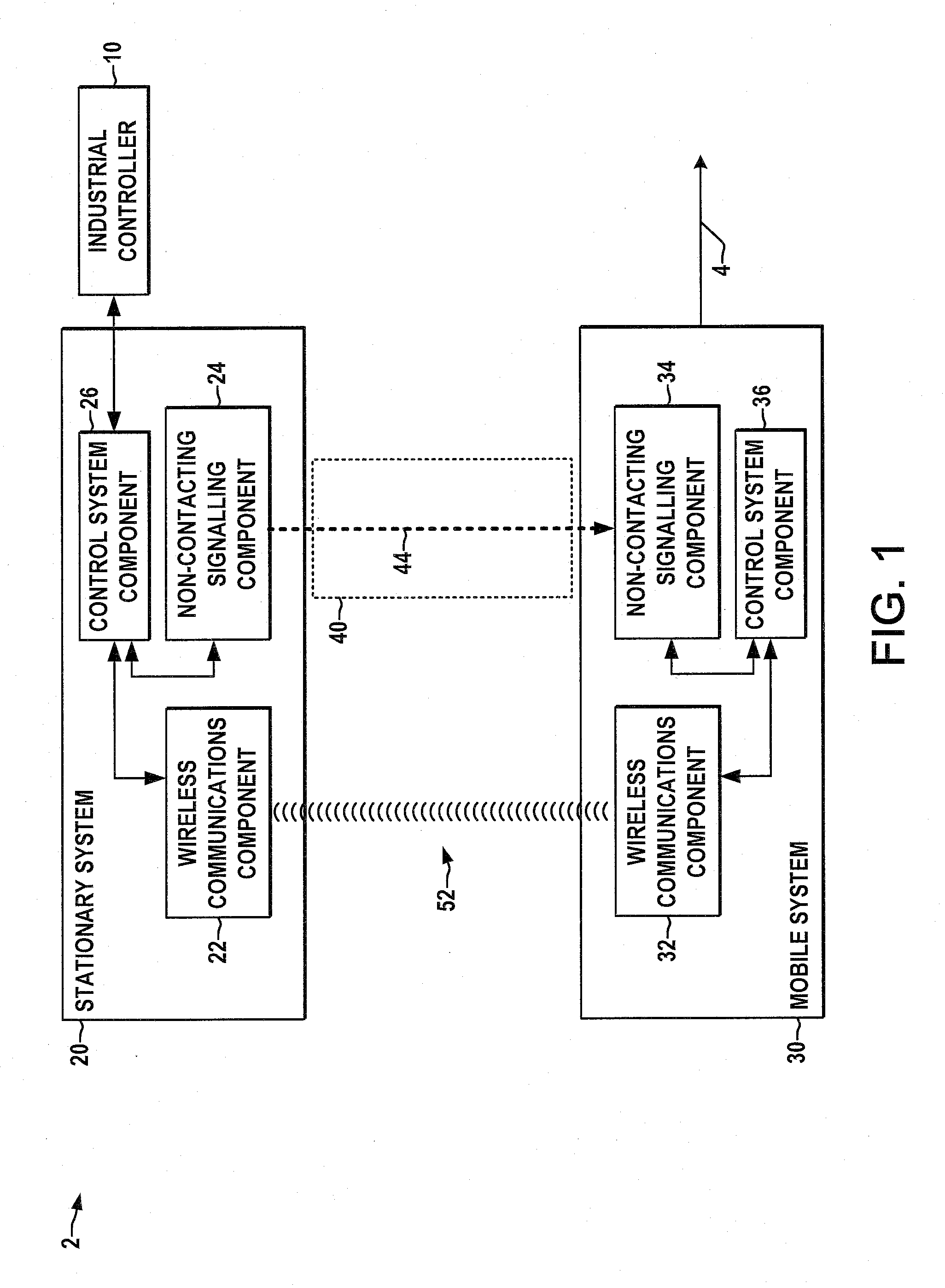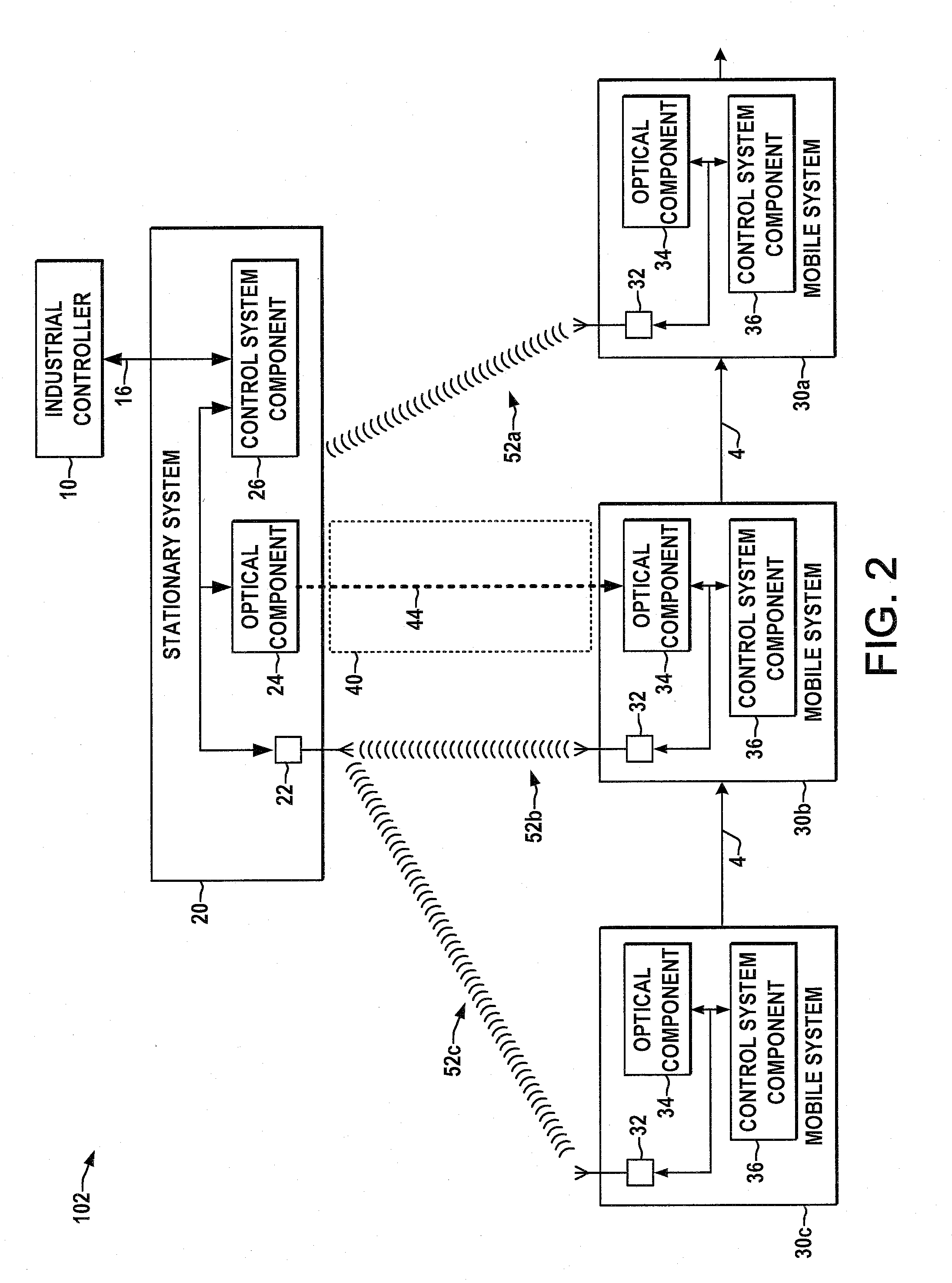Sight-line non contact coupled wireless technology
a wireless technology and non-contact technology, applied in the field of control systems, can solve the problems of adding cost and complexity to the manufacturing operation, components that require exhaustive address assignment and management, etc., and achieve the effect of facilitating system-wide adaptability and reducing the cost and complexity of configuration and reconfiguration of control system components
- Summary
- Abstract
- Description
- Claims
- Application Information
AI Technical Summary
Benefits of technology
Problems solved by technology
Method used
Image
Examples
Embodiment Construction
[0021]Referring now to the figures, several embodiments or implementations of the present invention are hereinafter described in conjunction with the drawings, wherein like reference numerals are used to refer to like elements throughout, and wherein the various features are not necessarily drawn to scale. The invention provides methods and systems for control of movable systems in an automated process with a stationary system having a first control system component and a movable system having a second control system component, in which non-contacting signaling between the stationary and movable systems is used to ascertain whether the movable system is proximate the stationary system, and wireless communications is used to transfer control data between the systems while the non-contacting signal link is maintained. In the following examples, different forms of stationary and movable systems are illustrated and described, including stationary equipment associated with a manufacturin...
PUM
 Login to View More
Login to View More Abstract
Description
Claims
Application Information
 Login to View More
Login to View More - R&D
- Intellectual Property
- Life Sciences
- Materials
- Tech Scout
- Unparalleled Data Quality
- Higher Quality Content
- 60% Fewer Hallucinations
Browse by: Latest US Patents, China's latest patents, Technical Efficacy Thesaurus, Application Domain, Technology Topic, Popular Technical Reports.
© 2025 PatSnap. All rights reserved.Legal|Privacy policy|Modern Slavery Act Transparency Statement|Sitemap|About US| Contact US: help@patsnap.com



